The Vatican Museums are among the most famous museum complexes in the world, showcasing a vast array of art and artifacts collected by the Catholic Church over centuries. The origins of the Vatican Museums date back to 1506, when Pope Julius II acquired the Laocoön and His Sons, an ancient Greek marble sculpture discovered in Rome. Recognizing the significance of this masterpiece, Julius II placed it in the Vatican, marking the beginnings of what would become the museums' extensive collection. The museums were officially opened to the public by Pope Clement XIV and Pope Pius VI in the late 18th century.
The Vatican Museums are a sprawling network of galleries, chapels, and courtyards, each showcasing unique artistic treasures. Some of the most notable spaces include:
The Sistine Chapel
Renowned for Michelangelo's breathtaking ceiling frescoes painted between 1508 and 1512, the Sistine Chapel serves as both a liturgical space and for the papal conclave convened in order to elect a pope. Photography is strictly prohibited here.
Raphael Rooms (Stanze di Raffaello)
These private apartments of Pope Julius II are adorned with frescoes by Raphael and his workshop, including the iconic School of Athens, which celebrates classical philosophy and learning. The Hall of Constantine's ceiling, depicting the Triumph of the Christian religion in its central panel, was created by Tommaso Laureti and completed in 1585.
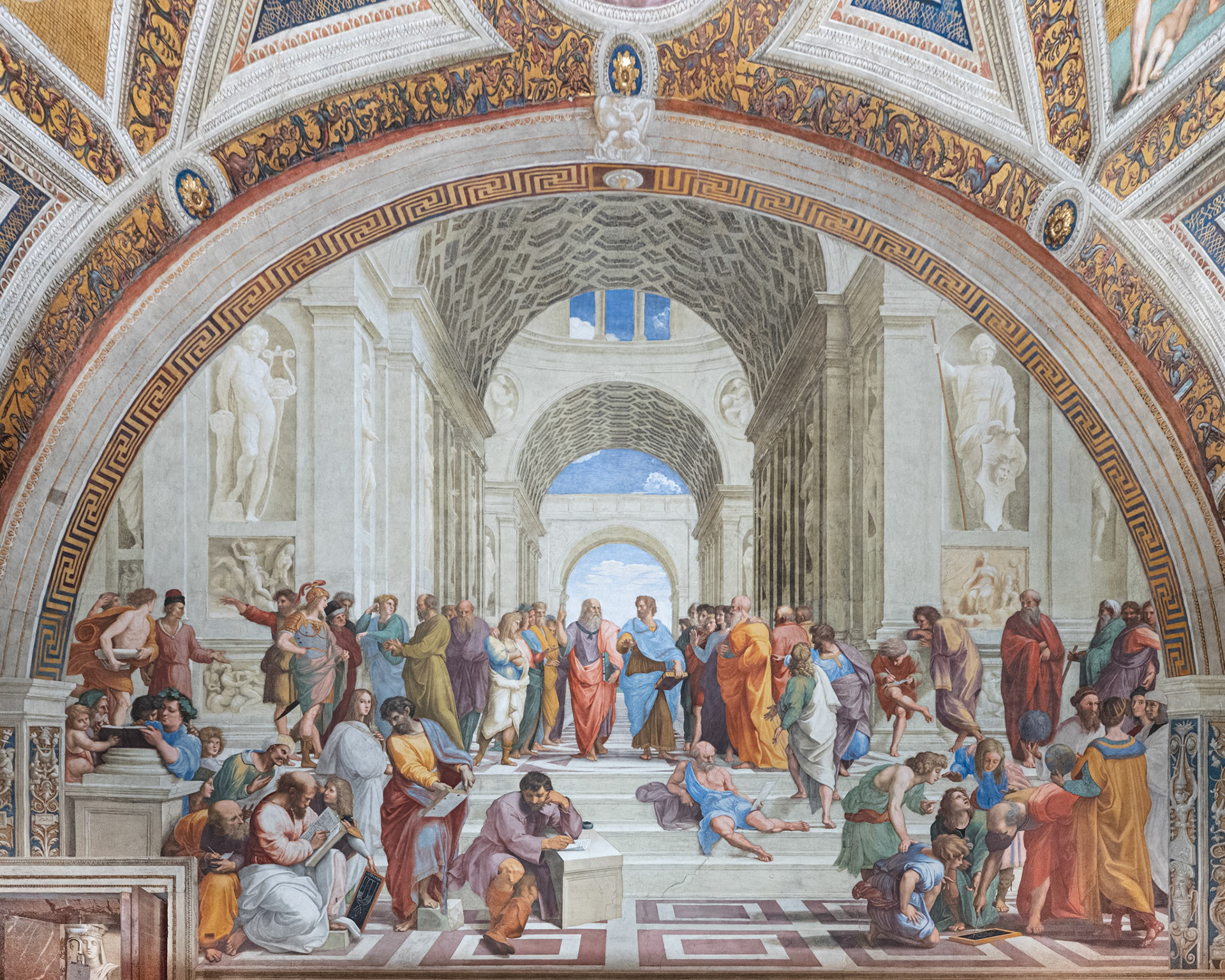
School of Athens, Raphael (1509 - 1511)
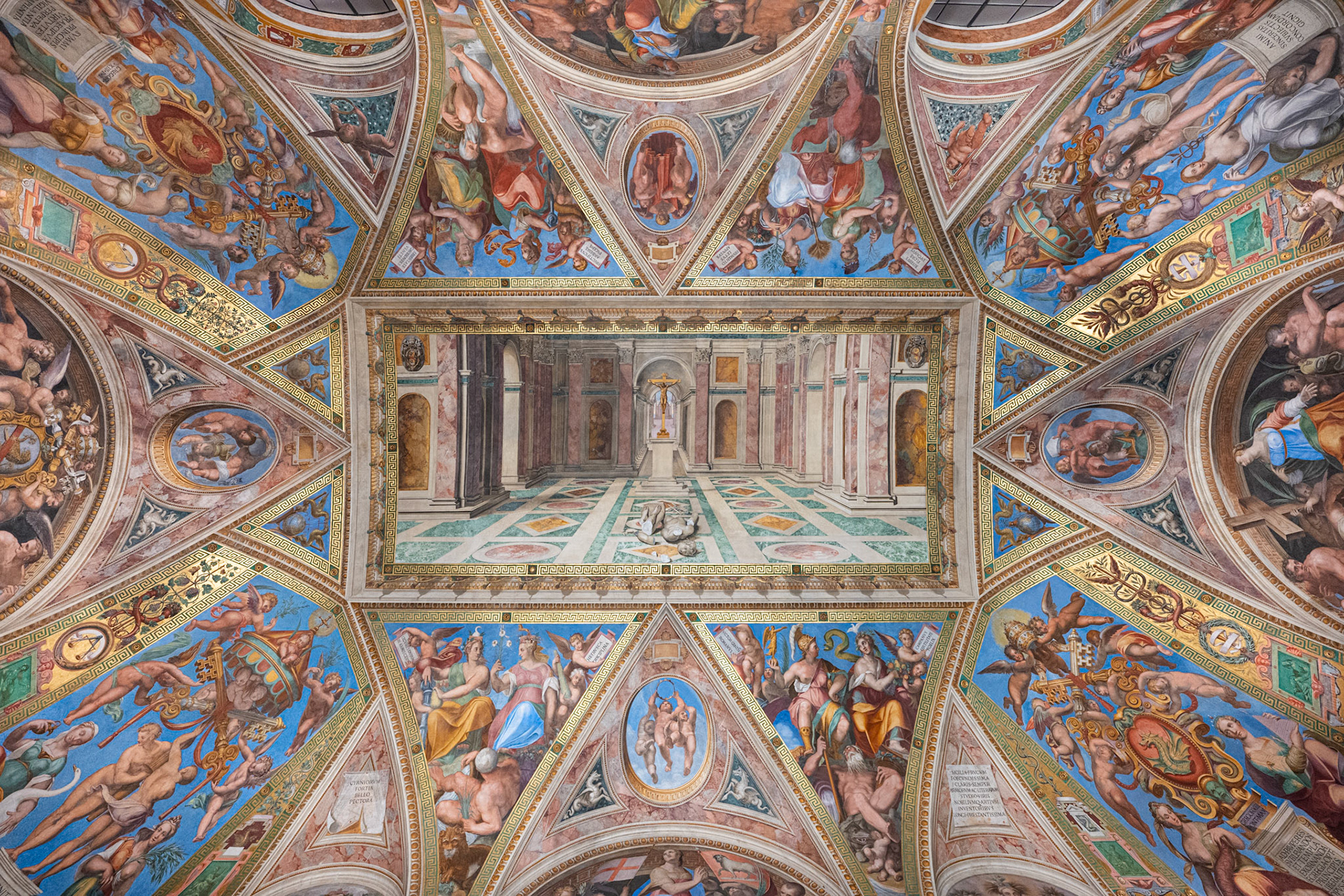
ceiling of the Hall of Constantine by Tommaso Laureti (1585)
Gallery of the Candelabra
The Gallery of the Candelabra is named after the grand marble candelabras that divide the space into six distinct sections. Originally arranged under Pope Pius VI Braschi between 1785 and 1788, the gallery underwent a comprehensive renovation during the pontificate of Pope Leo XIII Pecci. The current decorative scheme dates to this renovation, which was overseen by Annibale Angelini. Angelini commissioned Domenico Torti and Ludwig Seitz for the paintings
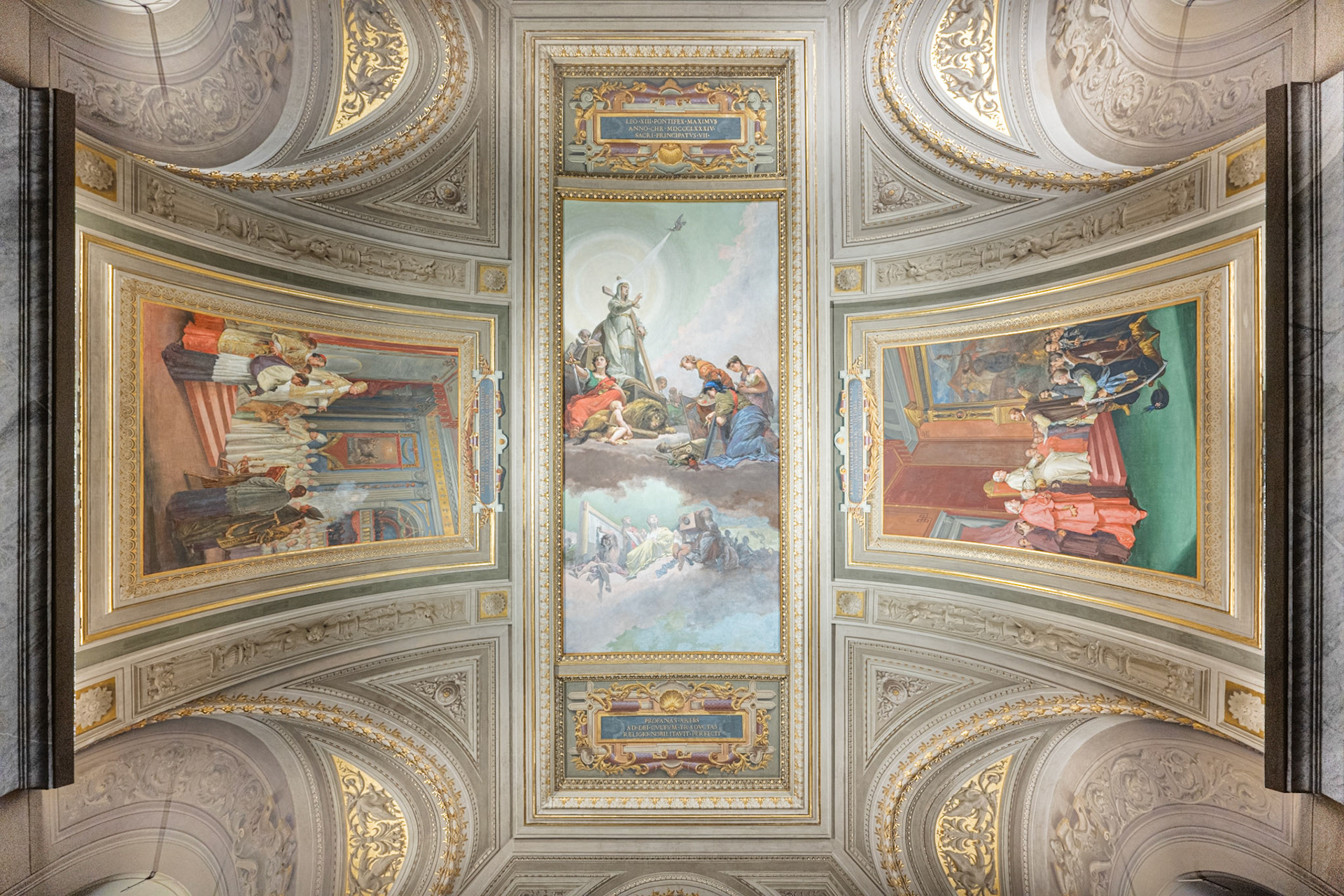
ceiling painting in the Gallery of the Candelabra: The Triumph of Truth over Falsehood, Domenico Torti

coat of arms of Pope Leo XIII

St. Thomas Kneeling and Offering His Works to the Roman Catholic Church, Ludwig Seitz
Sala delle Dame
The Sala delle Dame was originally constructed under Pope Paul V Borghese. In 1608 and 1609, Pope Paul V commissioned the Italian painter Guido Reni to adorn the ceiling with frescoes depicting the Pentecost, the Transfiguration, and the Ascension into Heaven. These masterpieces are framed by intricate stucco decorations, featuring the distinctive emblems of the Borghese family.
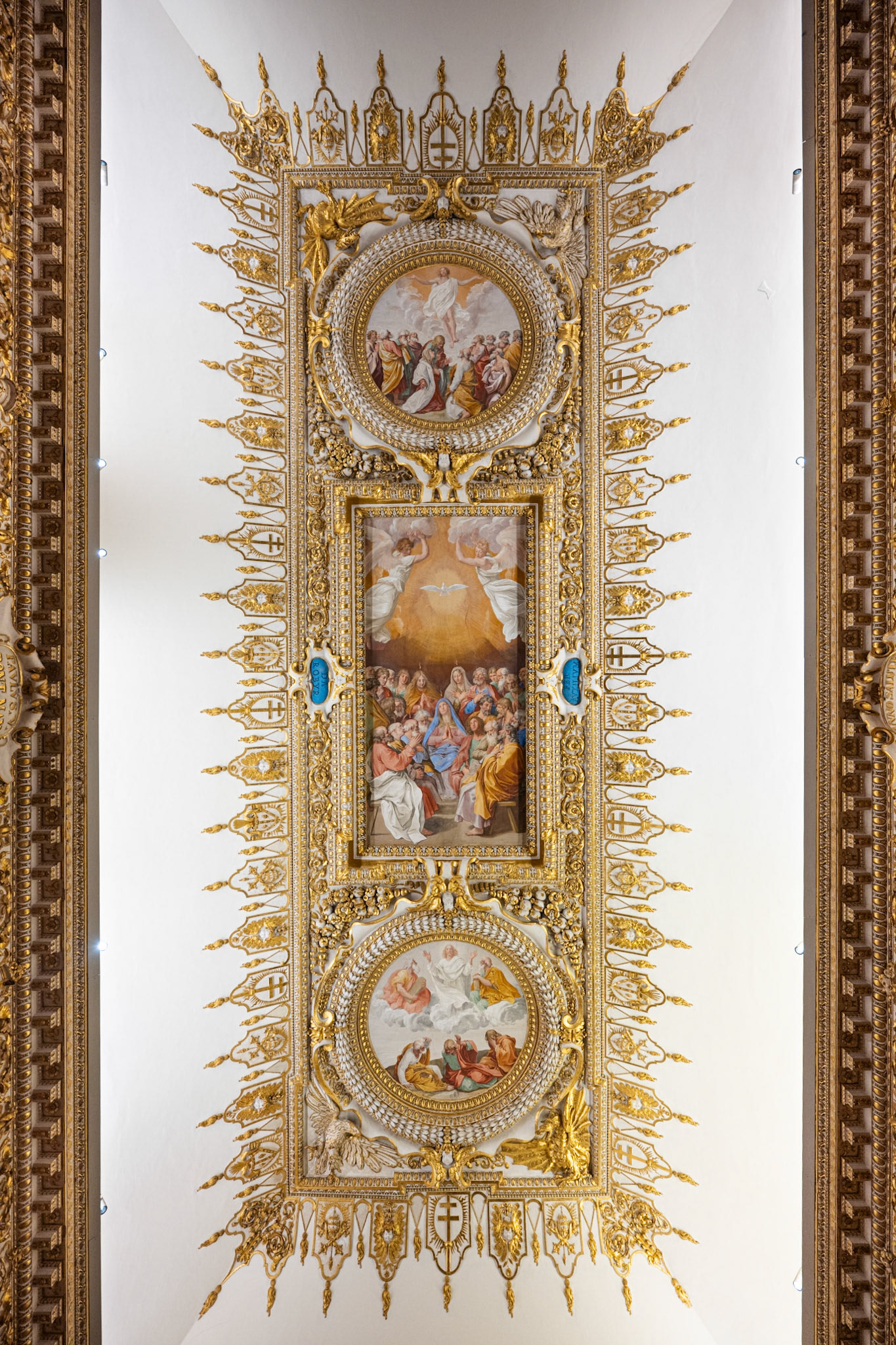
ceiling fresco in the Sala delle Dame by Guido Reni
The Modern Art Collection
Pope Paul VI, a staunch advocate for modern art, believed that the Church and artists could collaborate to explore themes of faith, humanity, and transcendence in contemporary forms. In 1973, the Vatican Museums formally opened this collection, housing works donated by artists and collectors or acquired directly by the Vatican. The collection now occupies over 55 rooms in the Vatican Museums and includes more than 8,000 works.
One of the highlights of the Modern Art Collection is Vincent van Gogh’s Pietà (1889). The painting portrays the Virgin Mary holding the lifeless body of Christ, rendered in Van Gogh’s signature thick brushstrokes and intense colors.

Pietà, Vincent van Gogh, 1889
Other highlights of the collection are Ernst Ludwig Kirchner's Bodenseelandschaft bei Kreuzlingen (1917), a vivid expressionist landscape reflecting his emotional connection to nature. Two surreal masterpieces by Salvador Dalí, Soft Monster in Angelic Landscape and The Trinity, showcase his dreamlike imagery. Piet Mondrian's Bend in the Gein, with Poplars, Three Isolated (1907), is an early work highlighting his transition from naturalism to abstraction through its rhythmic composition and delicate interplay of light and form.

Bodenseelandmschaft bei Kreuzlingen, Ernst Ludwig Kirchner, 1917
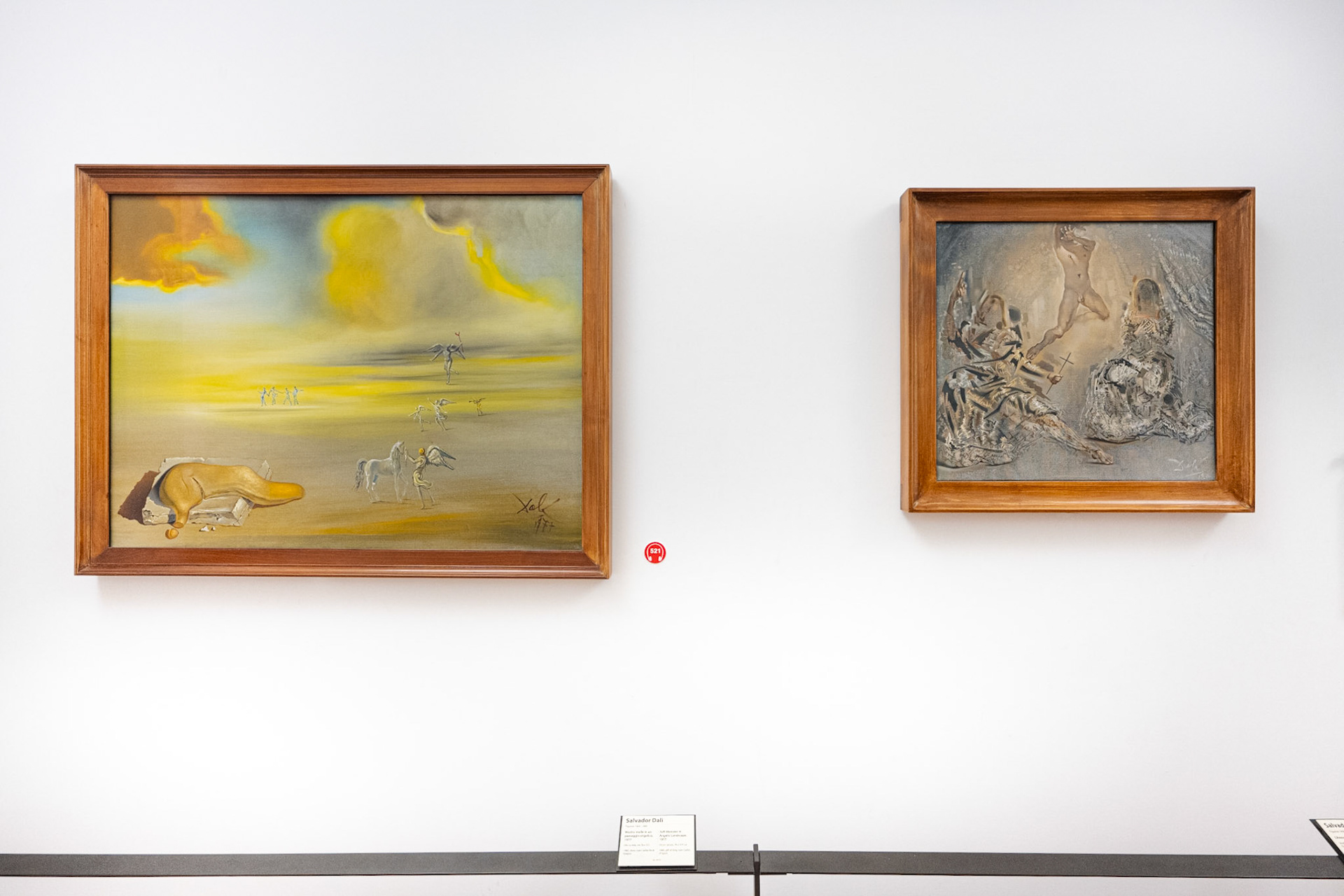
Soft Monster in Angelic Landscape and The Trinity by Salvador Dalì
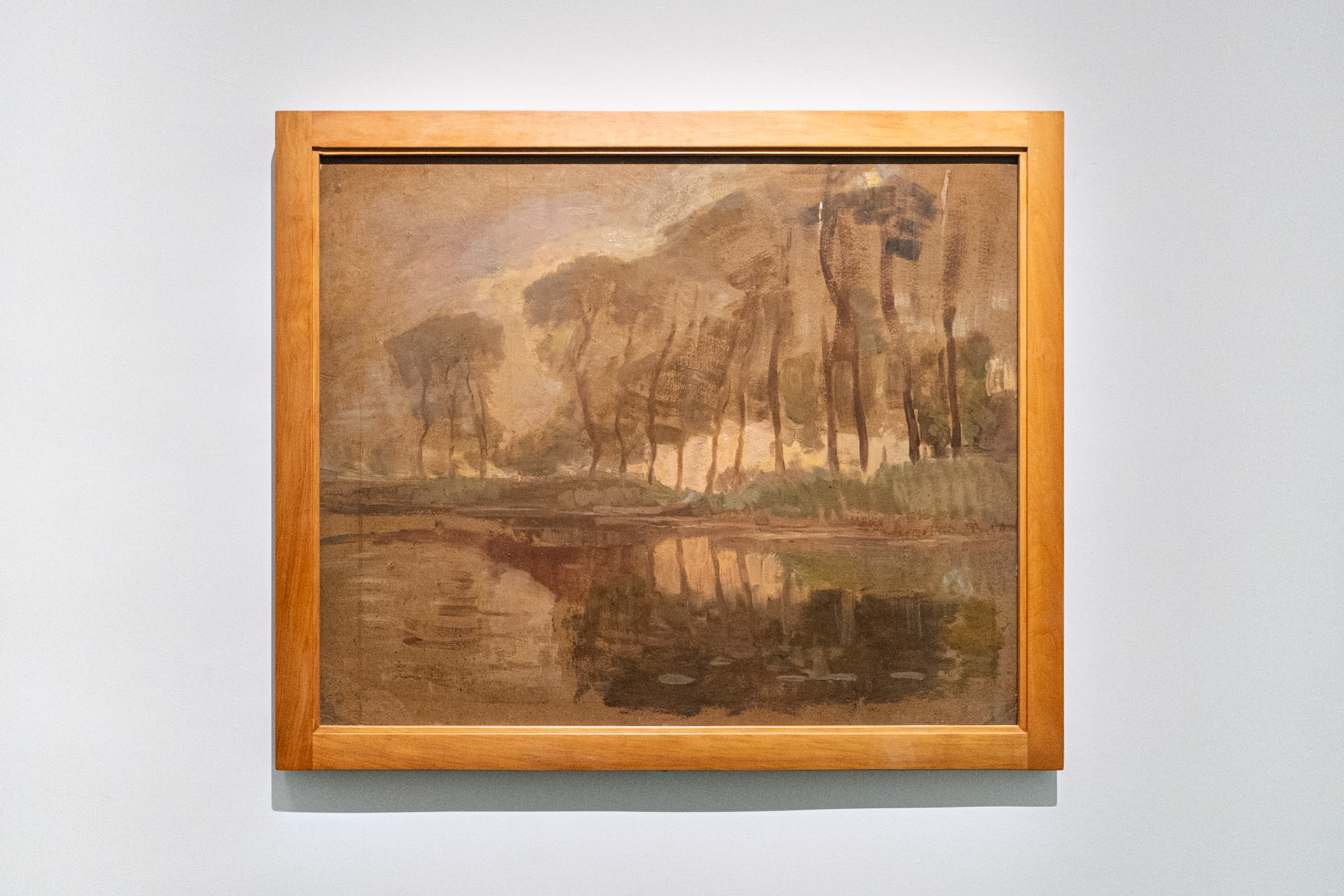
Bend in the Gein, with poplars, three isolated, Piet Mondrian, 1907
Opened on 22 June 2011, the Matisse room showcases works related to his design of the Chapelle du Rosaire in Vence, France. It comprises the artist’s preparatory studies, including full-scale sketches, drawings, and maquettes.
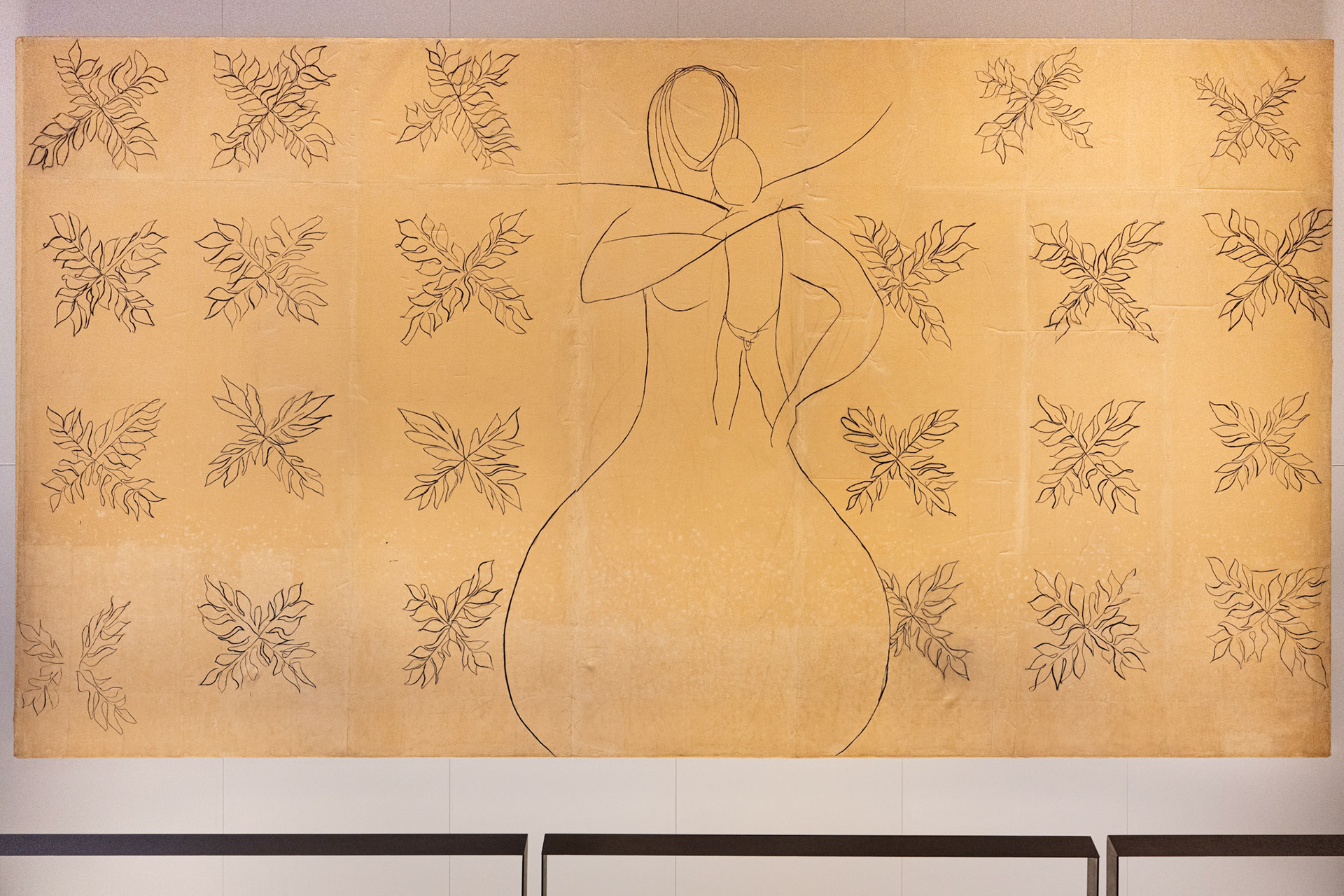
La vierge à l'enfant, Henri Matisse, 1949
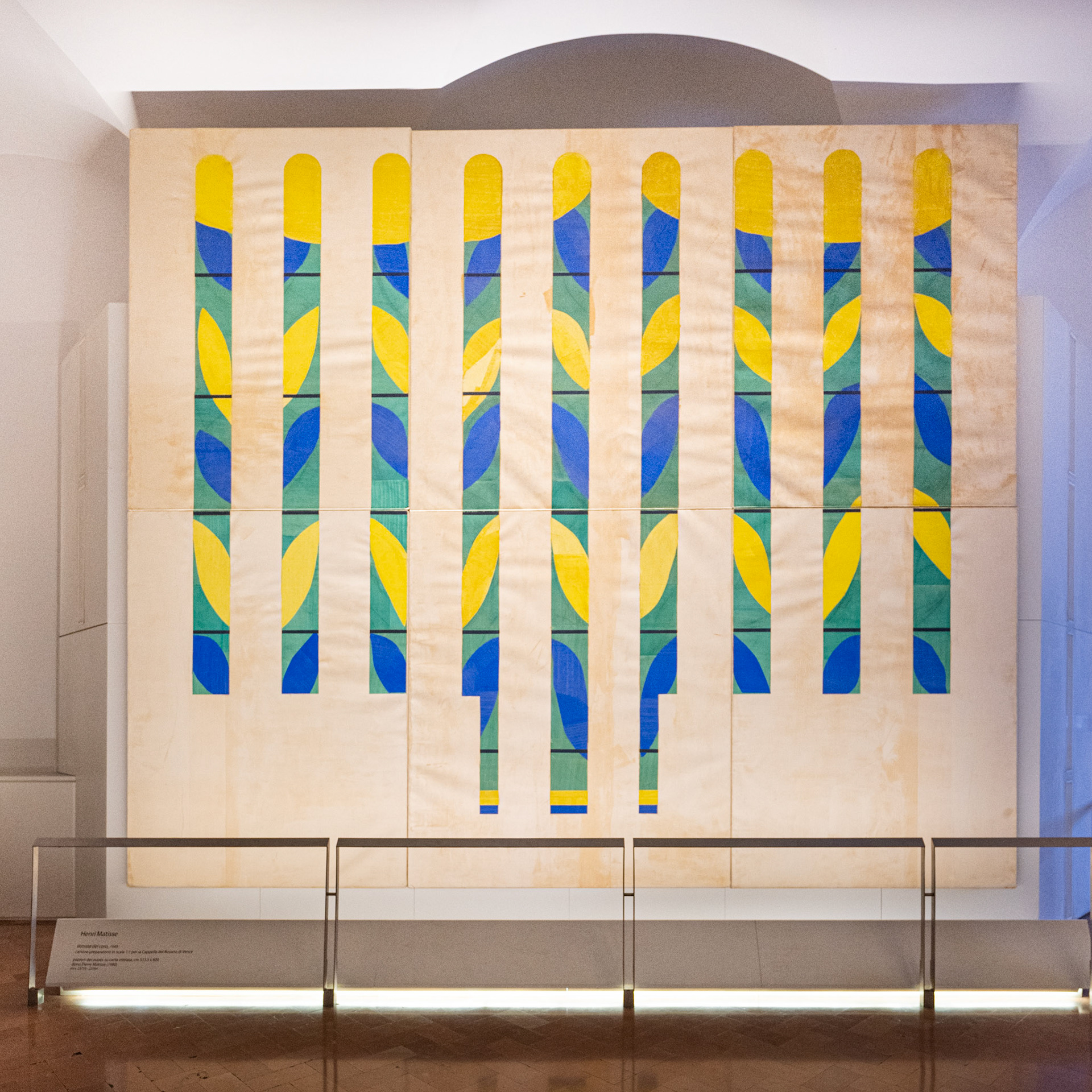
L'arbre de vie, Henri Matisse, 1949
The Vatican Museums' Modern Art Collection also includes a stained-glass work by Fernand Léger, originally designed for the Église du Sacré-Cœur in Audincourt, France. Though completed in 1952 in the workshop of master glassmaker Jean Barillet, this particular panel was never installed, as it was replaced by another piece deemed more chromatically harmonious with the church’s overall design.
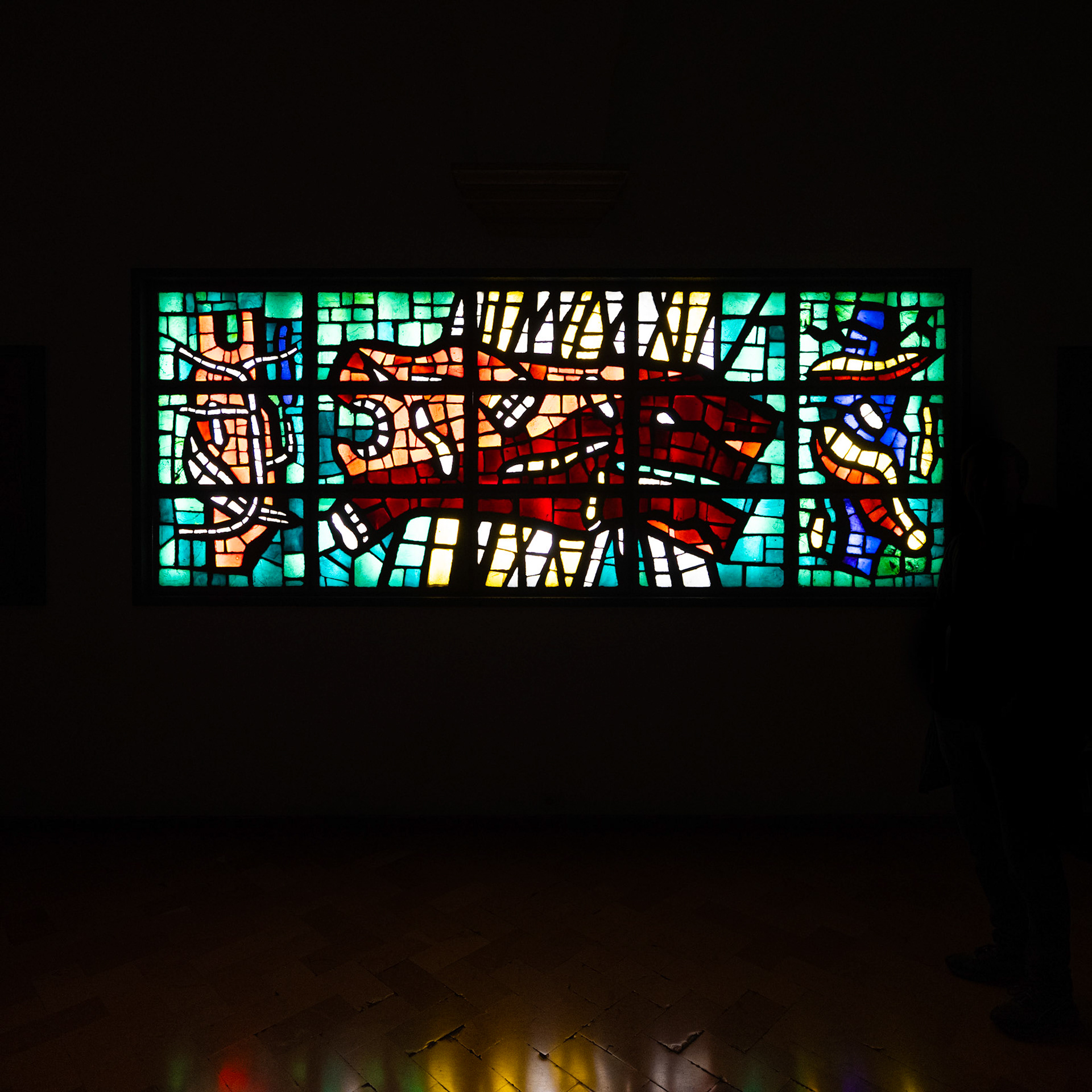
stained-glass window by Fernand Léger, designed for the Église du Sacré-Cœur in Audincourt
Momo staircase
The iconic exit spiral staircase of the Vatican Museums was designed by Italian architect Giuseppe Momo in 1932. Known as the Momo Staircase, it is a striking double-helix design, featuring two intertwined ramps that allow visitors to ascend and descend simultaneously without crossing paths. The staircase is made of bronze and stone and is housed within a large atrium.
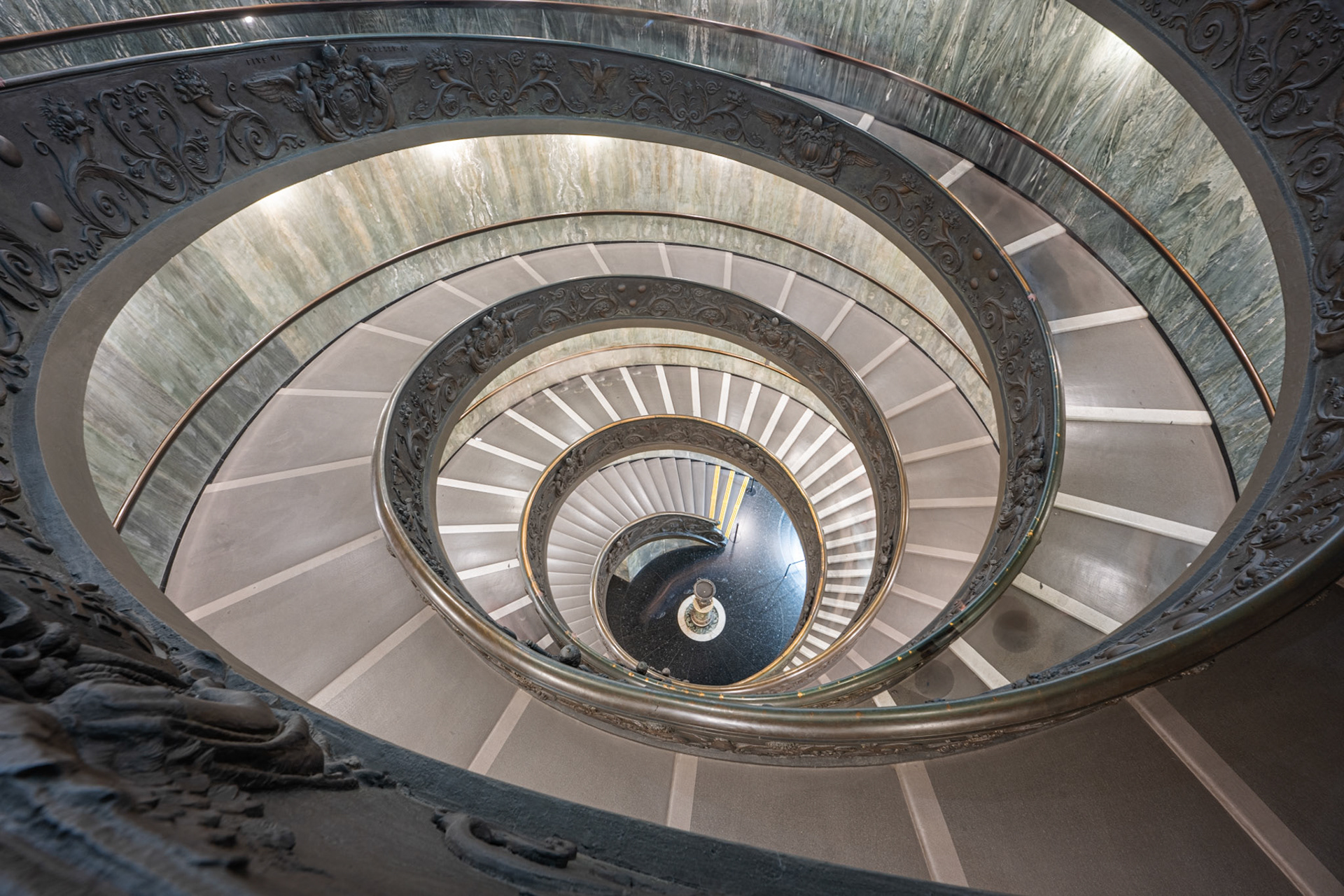
Momo staircase
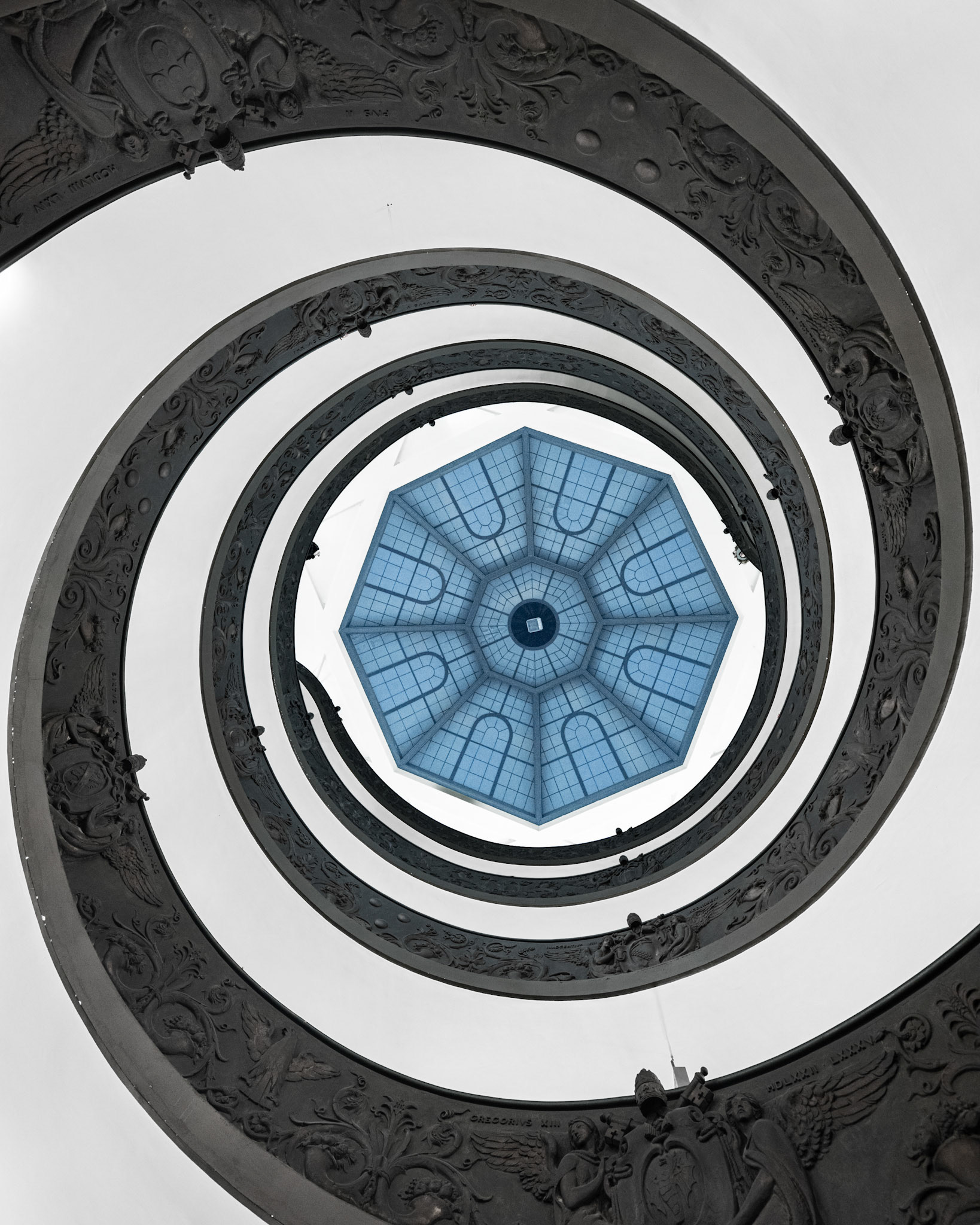
Momo staircase and atrium
You may also like